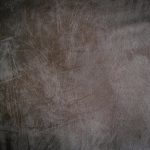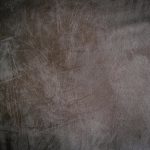You’ll want to use a fabric protector specially made for suede, like Scotchgard Suede, Kiwi Suede & Nubuck, or Crep Protect. These products create a breathable, water-repellent barrier without altering the soft texture or color. Always apply on a clean, dry surface and test on a hidden spot first to avoid damage. Proper application and care will keep your suede couch looking great longer. Keep going to uncover more tips on protecting and maintaining your suede furniture.
Table of Contents
Key Takeaways
- Choose fabric protectors specifically formulated for suede or nubuck to avoid discoloration and damage.
- Water-based, breathable sprays like Scotchgard Suede or Kiwi Suede & Nubuck are ideal for repelling water and stains.
- Always apply fabric protector on a clean, dry couch and test on a hidden area first to check for color changes.
- Spray evenly from 6-8 inches away in light, overlapping coats to form a consistent protective barrier without saturating.
- Regular maintenance with brushing and prompt cleaning enhances fabric protector effectiveness and extends suede couch lifespan.
Understanding Suede Material and Its Care Requirements
Because suede has a soft, napped texture made from the underside of animal hides, it requires special care to maintain its appearance.
You’ll find that suede is more delicate than smooth leather and easily shows stains, water spots, and scuffs. To keep your suede couch looking great, you need to handle it gently and avoid exposure to moisture and harsh cleaning products.
Regular brushing with a suede brush will lift the nap and remove dirt, but don’t use a regular cloth or sponge. Also, avoid direct sunlight, which can cause fading.
Brush suede gently with a suede brush and keep it out of direct sunlight to prevent fading.
Since suede is porous, it absorbs oils and liquids quickly, making prompt attention to spills essential to prevent permanent damage. Understanding these care needs helps you protect your suede couch effectively.
Key Features to Look for in a Suede Fabric Protector
Taking care of your suede couch starts with understanding its delicate nature, but protecting it goes a step further.
When choosing a fabric protector, look for one that’s specifically formulated for suede or nubuck to avoid discoloration or damage. It should create a breathable barrier that repels liquids and stains without sealing the fabric completely, allowing the suede to maintain its natural texture.
A water-based formula is often preferable since it’s gentle and less likely to alter the color. Also, verify the protector dries clear and doesn’t leave residue, which can attract dirt.
Finally, versatility matters—pick a product that works on various suede finishes and is easy to apply, so you can keep your couch looking fresh with minimal effort.
Top Fabric Protectors Recommended for Suede Couches
When choosing a fabric protector for your suede couch, water repellent sprays are a top choice to shield against spills and moisture.
You’ll also want to contemplate stain guard solutions that create an invisible barrier to block dirt and stains.
Let’s explore the best options that keep your suede looking fresh and protected.
Water Repellent Sprays
Although suede is known for its delicate texture, you can protect your couch effectively by using water repellent sprays designed specifically for this fabric. These sprays create an invisible barrier that prevents water from soaking in, reducing the risk of stains and damage. When choosing a spray, look for one that’s safe for suede and easy to apply. Always test on a small area first.
| Spray Brand | Features | Application Tips |
|---|---|---|
| Scotchgard Suede | Water & stain repellent | Apply in a well-ventilated area |
| Kiwi Suede & Nubuck | Protects & restores | Use light, even coats |
| Crep Protect | Durable water repellent | Allow full drying before use |
Using these sprays regularly helps maintain your suede couch’s appearance and longevity.
Stain Guard Solutions
Water repellent sprays do a great job shielding your suede couch from moisture, but they mightn’t cover all types of stains. That’s where stain guard solutions come in.
These protectors create a barrier against oil, dirt, and other stubborn stains that water repellents can’t always handle. When you apply a stain guard, you help prevent spills from soaking deep into the suede fibers, making cleanup easier and preserving your couch’s appearance.
Look for products specifically designed for suede or delicate fabrics to avoid damage. Always test a small hidden area first to verify no discoloration occurs.
Using a stain guard regularly, especially in high-traffic areas, keeps your suede couch looking fresh and extends its lifespan without compromising its soft texture.
How to Properly Apply Fabric Protector on Suede Furniture
Before you apply fabric protector on your suede furniture, make certain it’s clean and dry to get the best results.
Spray the protector evenly and thoroughly over the surface, avoiding any heavy spots.
Finally, let it dry and cure completely to guarantee lasting protection.
Preparation Before Application
When you prepare your suede couch for fabric protector, cleaning it thoroughly is essential to make certain the product adheres properly.
Start by vacuuming the entire surface with a soft brush attachment to remove dust and loose dirt.
Next, treat any stains using a suede cleaner or a mild detergent diluted in water—apply gently with a soft cloth and avoid soaking the fabric.
Allow the couch to dry completely in a well-ventilated area, as moisture can interfere with the protector’s effectiveness.
Before applying the protector, test it on a small, hidden area to make sure it doesn’t alter the suede’s color or texture.
Taking these preparation steps carefully will help you get the best results when you apply the fabric protector.
Applying Evenly and Thoroughly
Although applying fabric protector on suede can seem tricky, you’ll get the best results by spraying it evenly from a distance of about 6 to 8 inches.
Hold the can upright and move in smooth, sweeping motions to avoid saturating any one spot. Focus on covering the entire surface without over-applying, which could cause discoloration or stiffness.
Work in small sections, overlapping slightly to guarantee thorough coverage. Don’t forget to spray edges and seams, as these areas are vulnerable to dirt and moisture.
If you miss a spot, go back and lightly spray it to maintain uniform protection.
Drying and Curing Time
Since suede is sensitive to moisture, you’ll need to let the fabric protector dry completely to assure it bonds properly without damaging the material.
After applying the protector, avoid using your couch or exposing it to humidity until it’s fully cured. Patience here guarantees long-lasting protection.
To help you manage drying and curing effectively:
- Allow at least 24 hours for the fabric protector to dry in a well-ventilated area.
- Avoid direct sunlight or heat sources which can cause uneven drying or damage.
- Don’t sit or place objects on the suede during curing to prevent marks.
- Test a small hidden area first to confirm drying time and fabric response.
Following these steps helps maintain your suede’s texture and extends the life of the protection.
Tips for Maintaining and Cleaning a Protected Suede Couch
To keep your suede couch looking its best, you’ll need to adopt a regular maintenance routine that complements the fabric protector you’ve applied.
Start by gently brushing the suede with a soft-bristle brush to remove dust and restore its nap. Avoid using water, as it can stain even protected suede.
For small spills, blot immediately with a clean, dry cloth—never rub. Vacuum your couch weekly using the upholstery attachment to prevent dirt buildup.
If you spot stains, use a suede-specific cleaner following the product instructions carefully. Remember to test any cleaner on an inconspicuous area first.
Finally, keep your couch out of direct sunlight and away from heat sources to preserve its texture and color.
With these steps, your protected suede will stay fresh and vibrant longer.
Common Mistakes to Avoid When Using Fabric Protectors on Suede
Maintaining a suede couch with fabric protector requires careful attention, but using these products incorrectly can cause more harm than good. You need to avoid common mistakes that compromise both protection and the delicate suede texture.
First, don’t apply fabric protector on a dirty or wet surface; always clean and dry your couch thoroughly. Avoid saturating the suede—applying too much can cause discoloration or stiffness.
Never use harsh chemicals or generic protectors not designed for suede, as they can damage the nap. Finally, don’t forget to test the product on a small, hidden area before full application to prevent unwanted reactions.
- Applying protector on damp suede
- Overapplying and creating residue buildup
- Using non-suede-specific protectors
- Skipping patch tests before full use
Frequently Asked Questions
Can Fabric Protectors Change the Color of My Suede Couch?
Like a painter’s brush, fabric protectors can sometimes alter your suede couch’s color. You shouldn’t worry too much, but always test a small hidden spot first to make sure it won’t leave unwanted stains or changes.
Are Fabric Protectors Safe for Pets and Children?
You’ll find many fabric protectors labeled safe for pets and children, but you should always check ingredients and test a small area first. Opt for non-toxic, eco-friendly options to keep your loved ones safe.
How Often Should I Reapply Fabric Protector on Suede?
You should reapply fabric protector on suede every 6 to 12 months, depending on use and exposure to dirt or moisture. If your suede gets heavy use, consider revitalizing the protection more frequently to keep it looking great.
Can I Use Homemade Fabric Protectors on Suede Furniture?
You might think homemade fabric protectors save money, but they often lack the right ingredients for suede’s delicate texture. So, you shouldn’t risk damage—stick with specialized products designed to shield and preserve your suede furniture properly.
What Are the Environmental Impacts of Suede Fabric Protectors?
You should know suede fabric protectors often contain chemicals that can harm the environment during production and disposal. Using eco-friendly, biodegradable options reduces pollution and protects ecosystems, so always check labels before applying them on your furniture.
- Nonwoven Vs Woven Bags: an In-Depth Comparison - July 11, 2025
- Which Wax Strips Are Better: Woven or Nonwoven? - July 11, 2025
- What Temperature Is Needed to Thermoform Nonwoven Polyester? - July 11, 2025






